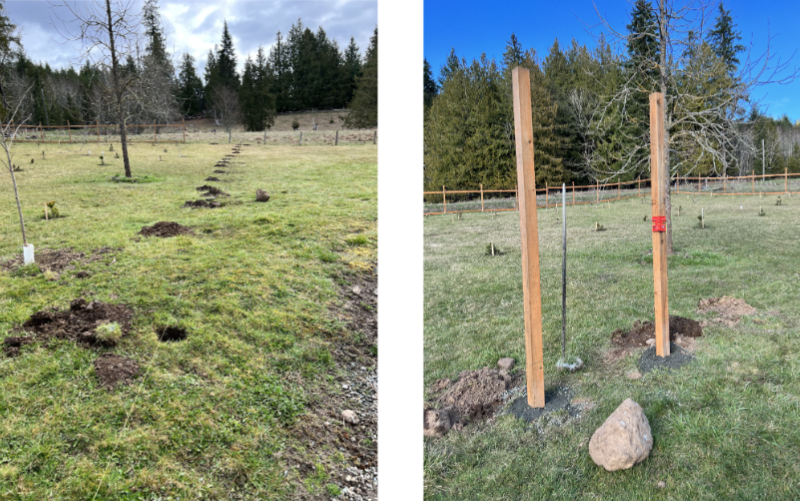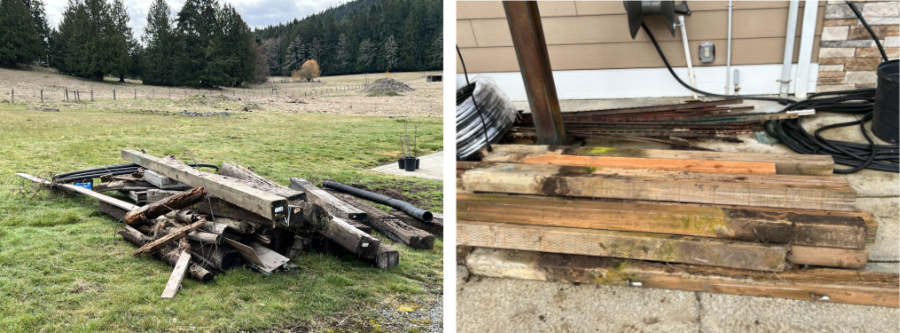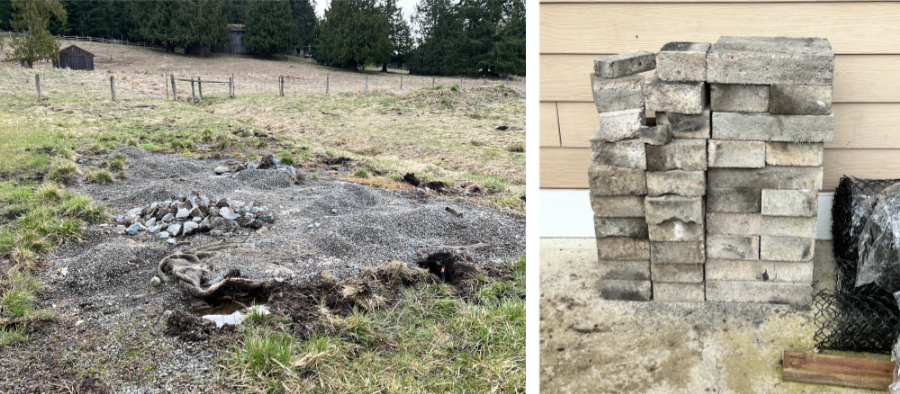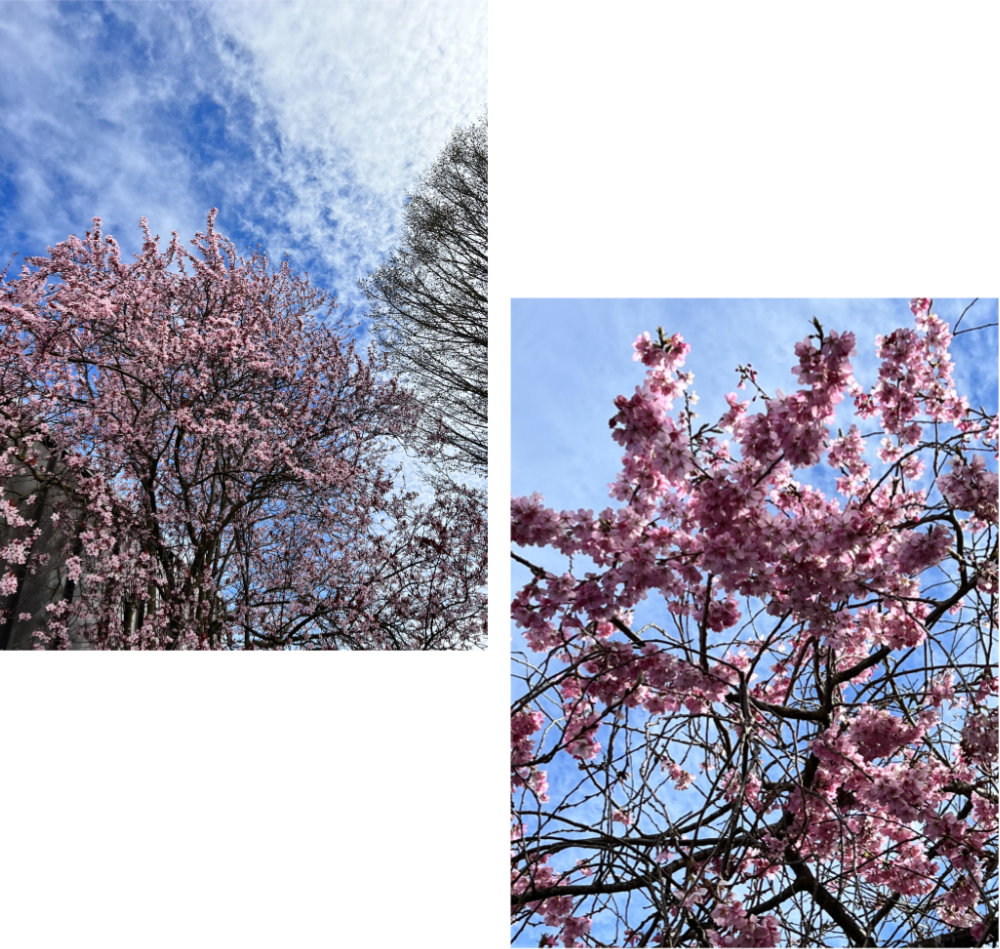 Baby plants are snuggled in and seem to be adjusting to their new digs (Who could resist that?). Everyone assured me, nervous parent that I can be, that the little folk would be fine for a month or so before the deer caught on to their location. Not being inclined to put a lot of trust in the expertise or experts (belt and suspenders, doncha know), I sprayed liberally with the stinky stuff.
Baby plants are snuggled in and seem to be adjusting to their new digs (Who could resist that?). Everyone assured me, nervous parent that I can be, that the little folk would be fine for a month or so before the deer caught on to their location. Not being inclined to put a lot of trust in the expertise or experts (belt and suspenders, doncha know), I sprayed liberally with the stinky stuff.

Saturday the holes were dug for the rest of the fence around the planted area and the fellows did a lot of the cleaning up of messes too big and heavy for me to handle. Tuesday, posts went in and the enclosure started coming together. As I saw it I realized, in one of those “duh” moments, that we could do all the planting we want to do this year inside that enclosure. Going forward there will be more areas to plant, but for now we have a safe place for additional flowers and shrubs. Now we just need to wait for suitable nighttime temperatures.
Building the Zen Monastery Peace Center from bare ground up, often with used, free, or cheap materials where possible—repurposed wood and windows for hermitages, for instance—there was a tendency to accumulate a lot of “let’s hang on to that because we will likely have a use for it” items. Folks on the property have been working diligently to get all that cleared out and cleaned up so new stewards don’t have to face any messes.


The good news is that there’s nothing that can’t be rectified. Chon, who is overseeing the planting and the fences, wants the railroad ties for a retaining wall. The giant pipes can go to the local recycle/reuse/repurpose center. The old dog yard, repository of layers of old carpeting covered with gravel, can be dug out for a small pond near the bottom of the planted area, close to the greenhouse. From eyesore to charming with a fair amount of work. Fortunately, working meditation is #3 on our list of “meditations we enjoy practicing.” (Right after sitting and walking mediation and before “engaging with other human beings” meditation.)
I continue to appreciate the spiritual lessons of these few acres. As humans we create garbage, trash, the never-wanted in the form of packaging and the no-longer wanted in the form of the items we’ve worn out or simply gotten tired of. In this particular society we have never, and continue not to, prioritize “waste” disposal. The earth and the waters can attest to our woefully irresponsible relationship with plastic. We know what it is and does yet it’s cheap and difficult to replace so…. It’s true that I can box up all the packaging my local garbage company doesn’t recycle and send it off to folks who will recycle it or deal with it in some way that keeps it out of a landfill. (Landfill—talk about a euphemism!) But what about the mounds of buried carpeting? Should I dig that up to clean up this land and haul it off at great expense to pollute other land identified for that purpose?
Usually, at least in my life, the content isn’t quite that big. Yesterday I discovered my favorite tofu brand has changed their packaging from a non-recyclable plastic tub to a soft, still plastic, but easier to dispose of wrap. I project they’re trying. Cause for celebration. Helpful opportunity to remember we’re, each and all, both the problem and the solution. Realizing that without allowing any judgment or self-hate from the very ego voices angling for destruction while claiming righteous concern, we can take those little steps, make those little choices that add to the love.

Longer, warmer days, blue skies, and blossoming trees—so much to love!
In gasshō,
ch

